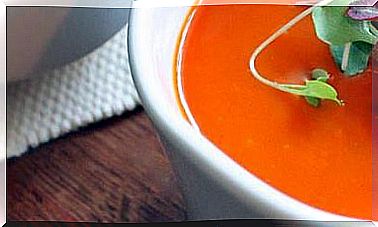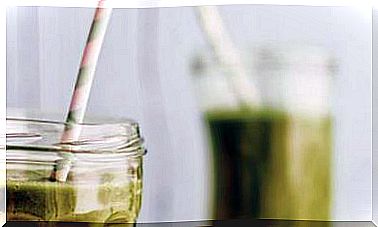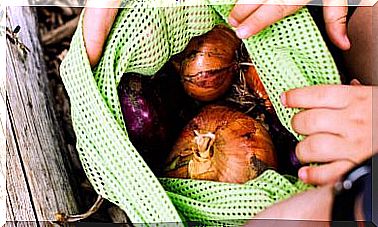7 Alternatives To Antibiotics For Common Infections
Antibiotics, used well, can save lives, but resorting to them every time an infection affects the flora and creates resistance. What alternatives are there?

The widespread use of antibiotics is based on the belief that there are very harmful bacteria against which the body cannot defend itself and that they must be eliminated with a drug.
Today the perspective has changed. Not all “bad” bacteria are considered bad for everyone, as many people keep them in check with their own bacteria and defenses. And sometimes the antibiotic not only does not cure, but causes major imbalances. This shift in focus opens up new avenues in the use of antimicrobials.
“Good” bacteria: the role of the microbiota
In an adult, the number of cells of microorganisms that live in your body can be ten times higher than that of your own cells.
In fact, it is calculated that 2 kg of body mass correspond to the set of bacterial species and other microorganisms that inhabit the body, which is scientifically known as “microbiota”.
These microorganisms are not alien to humans, but essential to their physiology, such as that of the brain, spleen or heart. The preservation of the functions of the microbiota is absolutely necessary to guarantee life and health.
At present, in the face of a disease, instead of suppressing a good part of the microbial flora, what is increasingly being sought is to balance it. This allows for curative treatments but can also improve prevention.
How do antibiotics affect the microbiota?
Antibiotics, in addition to their natural origin, can be classified into different families by their effect on bacteria or the body.
The betalactaminas (penicillins and cephalosporins), for example, alter the bacterial wall (particularly Gram positive bacteria), are little toxic and do not penetrate the animal cell, whereas macrolides block protein synthesis of the bacterial ribosome and promote toxicity liver.
Other families include the aminosides, tetraclines, and chemotherapeutic antibiotics .
Most antibiotics, when produced naturally by bacteria to control other bacteria, do so in small amounts and are regulated by the bacteria themselves.
However, when antibiotics are used in large quantities, great damage occurs in bacterial colonies, not only in pathological ones, but also in the usual non-pathogenic flora.
Antibiotic resistance: a problem of excesses
Spain is one of the countries in the world with the highest consumption of antibiotics (35 daily doses per thousand inhabitants) and the second in the European Union, behind France.
Antibiotic resistance has become a daily problem in European hospitals . Hospitalized patients have a high probability of receiving inappropriate antibiotics in half of the cases.
The excess of medical and veterinary prescriptions, self-medication and the medication of animals without veterinary prescription have favored the increase of these resistances.
When the healthcare system makes good use of antibiotics, there are hardly any infections from resistant bacteria. This is the great difference between health systems such as the Swedish, which pays attention to giving the right antibiotic, and the Spanish, which gives it with little control, especially in the veterinary or livestock sector.
It is irresponsible to ignore the community and ecological consequences that arise from individual antimicrobial treatments. The life of the human species depends intimately on a normal bacterial flora, and our flora, its balance and its resistance depend in turn on the flora that surrounds us.
The evidence indicates that the intestinal microorganisms of animals and humans form an interrelated ecosystem, in which one action at any point can affect all the others. Thus, whenever pathogenic bacteria encounter continued use of antibiotics, they learn, adapt, and become resistant.
The resistant bacteria resulting from this practice are not limited to remaining in the animals in which they grow. There are no “bacteria from the cow,” “from the pig,” or “from the chicken.” When it comes to microbes, humans, along with the rest of the animal kingdom, belong to a giant ecosystem. Resistant bacteria that grow in the intestines of a cow or pig can and do end up colonizing our bodies.
In order to defend themselves, bacteria naturally develop resistance to these products. In addition, the resistance of some bacteria is transmitted to its neighbors. This explains why it is important not to act only against a specific bacterium but to take into account the bacterial balance and try to protect or favor the usual flora.
How should the antibiotic be chosen?
Therefore, the antibiotic should be used only in exceptional cases and done in the most precise way possible, identifying the infectious process with a good diagnosis and knowing that if the prognosis is mild, it will be enough to stimulate the defenses, monitor the process and perhaps carry out a cultivation, if feasible, in case evolution changes.
If the prognosis can be serious and culture is useful, the infectious agent must be isolated and identified and tested “in vitro”, by means of an antibiogram, which antibiotic is more effective. An aromatogram can also be made , which helps to choose plant essences with anti-infective action.
The substance that is chosen should:
- Be narrow spectrum : very effective against the infectious agent and little against the non-infectious.
- Be slightly toxic to macrobes and microbes.
- Be administered without risk or hassle.
- Reach the infectious focus on time and without altering.
- Act long enough without interfering with natural defenses.
- Be cheap.
- Do not alter the microbial balance of the environment.
It should also be taken into account that the antibiotic can cause imbalances for weeks or months, both in the person who receives it and in other people and in the environment (hospital, water …), so it must be accompanied by probiotics that reinforce the flora .
What is the best natural antibiotic for each infection?
In addition, this need to respect the microbial balance leads to suggest treatments with more natural substances that respect the body’s own healing capacity.
These are common infections in which the antibiotic is usually used and in which there is a natural alternative. Before resorting to any of them, we recommend that you consult a specialist. In any case, if the infection does not improve or you notice any unwanted effects, stop the treatment and seek medical advice.
Acute sinusitis
The most widely used antibiotic is amoxicillin. As a general measure, analgesics can be taken and nasal washes with saline solution or thyme and salt infusion applied with a thickened python (burbot) and followed by thyme and mallow vapors.
Another option is to add tea tree essence and grapefruit extract to the wash water.
Acute otitis media
Although it resolves spontaneously in more than 80% of cases, amoxicillin and symptomatic treatment with analgesics and anti-inflammatories are often abused .
Instead you can take chamomile in infusion or tincture; Echinacea, 1 to 5 ml of tincture three to five times a day; or elderberry, a cup of infusion of the fresh plant two or three times a day.
For pain, a few drops of olive oil with garlic, mullein, calendula flowers and St. John’s wort can be applied to the ear .
Acute bronchitis
The most commonly used antibiotics are clarithromycin and azithromycin, but they are only indicated in severe conditions, in the presence of purulent sputum or in patients with morbidity or immunosuppression.
In general, it is recommended to suppress tobacco, use water vaporizers and ensure good oral hydration. For this, it is advisable to drink plenty of fluids (more than 2 liters a day), take garlic (two cloves a day), raw or boiled onion, lemon juice and infusions of thyme, eucalyptus, mint, echinacea or elderberry.
The inhalation of steam while facilitating drinking hot liquids slowly nasal breathing and drainage of secretions.
Urinary infection in women
Fosfomycin is used mainly , but also tinamoxicillin and nitrofurantoin, which are often abused in recurrent infections. Before use, an antibiogram culture should be performed.
A diet of fresh fruits is recommended , if possible with cranberries, drink one liter a day of bearberry cooking (1 tablespoon per liter) and thyme infusion (three times a day).
Fungal vaginitis
Used antifungals such as clotrimazole.
Before or at the same time, it should be treated with ovules with garlic extract, washed with sage and thyme, and lactobacilli. You can also alternate adding lemon juice and a few drops of grapefruit extract to the infusion.
Erysipelas
Penicillin and erythromycin are used .
To replace them with a more natural treatment, first wash the affected area well with clean water, if you want hot, and then apply an infusion of calendula and thyme or an ointment based on calendula, thyme and aloe.
Furunculosis
Penicillin and erythromycin are used . The wound is cleaned well and washed with marigold and thyme infusion. Clay can also be applied.
Antiseptics that take care of the flora
Some natural antimicrobials fight infection without weakening the body.
We have within our reach and almost daily the handling of soap and water as dissolution and drag, which is useful in urine infections, wound cleaning …
In addition, there are foods, plants and condiments with antimicrobial properties that at the same time protect the usual flora:
- Food : garlic, onions, leeks, radishes, carrots, citrus fruits (lemon, oranges), honey.
- Condiments and spices : paprika, saffron, cloves, cinnamon, pepper, nutmeg.
- Plants : thyme, rosemary, oregano, lavender, mint, pennyroyal, spearmint, fennel, anise, cumin, sage, tea, pine, juniper, eucalyptus, ginkgo.
- Resins : frankincense and myrrh.
- Breast milk : contains lactoferrin with bactericidal power against various microorganisms.
The naturopathic treatment of infections is based on the use of medicinal plants and patient observation. Respect the fever and recommend fasting as part of the treatment, accompanied by fresh fruit juices such as lemon and other citrus fruits, and vegetable juices, including garlic and onion.
To know more:
- Petra Neumayer: Natural antibiotics. Ed. RBA-Integral
- John Mckenna: Natural Remedies to Fight Infections. Ed. Paidós
Historical remedies to effectively fight infections
Before microbes were seen under a microscope, humans had used antimicrobial substances to heal for centuries.
- In central Europe, 5,300 years ago, Ötzi, the ice man, wore a mushroom bracelet with anti-infective properties.
- In ancient Egypt, embalmers knew the antiseptic power of salts (natron), which they enhanced with aromatic resins (incense and myrrh), although in common mummies they used onions (antibacterial).
- In India, banned doctors applied honey and fermented butter dressings to infected wounds.
- And in Greece, Hippocrates advised fighting infections with thyme, cinnamon, or vinegar.
The first “modern” antiseptics arrive in the 19th century. In 1847, Semmelweis ordered his students to wash their hands with chlorinated water before exploring the women in labor at the Vienna University Maternity Hospital, reducing mortality from 10% to 1%.
More than half a century later, the first synthetic anti-syphilitic was developed and, in 1935, the sulfa drugs. They revolutionize hospitals, but World War II leaves the allied bloc without supplies and the search for an alternative leads to the purification of penicillin, discovered a decade earlier by Fleming.
From the 1940s on, many other antibiotics produced by soil bacteria were discovered . While antibiotics are obtained from different clays, the word is spreading that clay is not used in infected wounds, when for centuries humans have seen how animals heal their wounds with mud.









